Aesthetic garden design is all about creating spaces that delight the senses and encourage relaxation. It’s where creativity meets nature, allowing you to blend colors, textures, and plants in ways that reflect your personal style. From cozy nooks filled with blooming flowers to sleek pathways framed by greenery, it’s about turning your outdoor area into a beautiful retreat that feels just right for you.
Incorporating Colorful Flower Beds
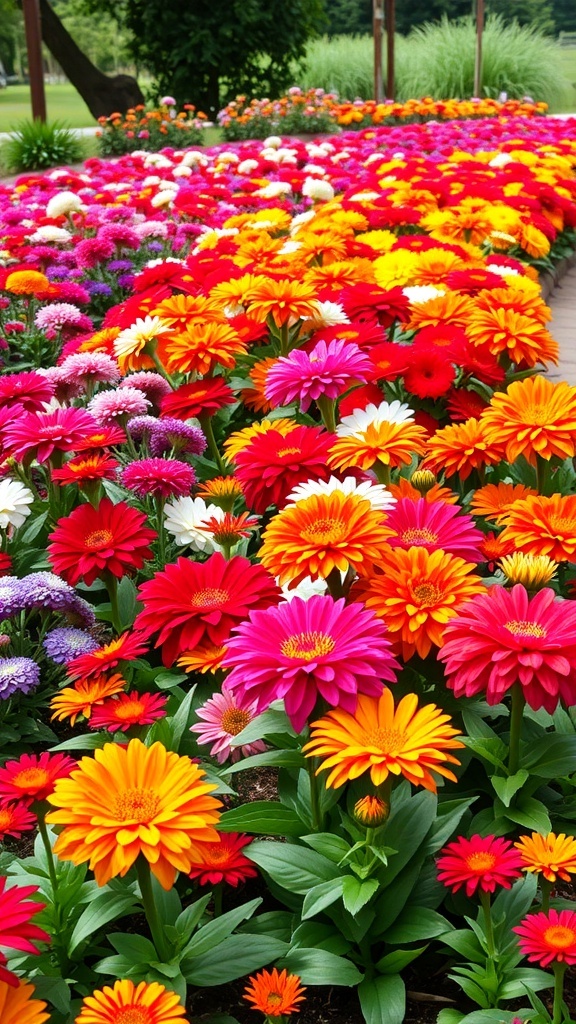
Colorful flower beds can truly transform any garden into a lively space. The vibrant hues of flowers create a cheerful atmosphere that invites everyone to stop and admire. Imagine walking through a garden filled with bright reds, yellows, and pinks, each flower adding its unique charm.
In the image, you can see a stunning array of flowers, showcasing a mix of colors that blend beautifully together. The bold reds and yellows are complemented by softer pinks and whites, creating a striking contrast. This variety not only pleases the eye but also attracts pollinators like bees and butterflies, enhancing the garden’s ecosystem.
When planning your flower beds, think about the seasons. Choose flowers that bloom at different times to ensure your garden remains colorful throughout the year. Mixing perennials with annuals can give you a dynamic look that changes with the seasons. Don’t shy away from experimenting with different shapes and sizes of flower beds to add depth and interest.
Incorporating colorful flower beds is a simple yet effective way to enhance your garden’s aesthetic. Whether you prefer a wildflower look or a more structured design, the key is to have fun with it. Let your creativity shine and enjoy the beauty that colorful flowers bring to your outdoor space.
Designing a Rustic Herb Garden
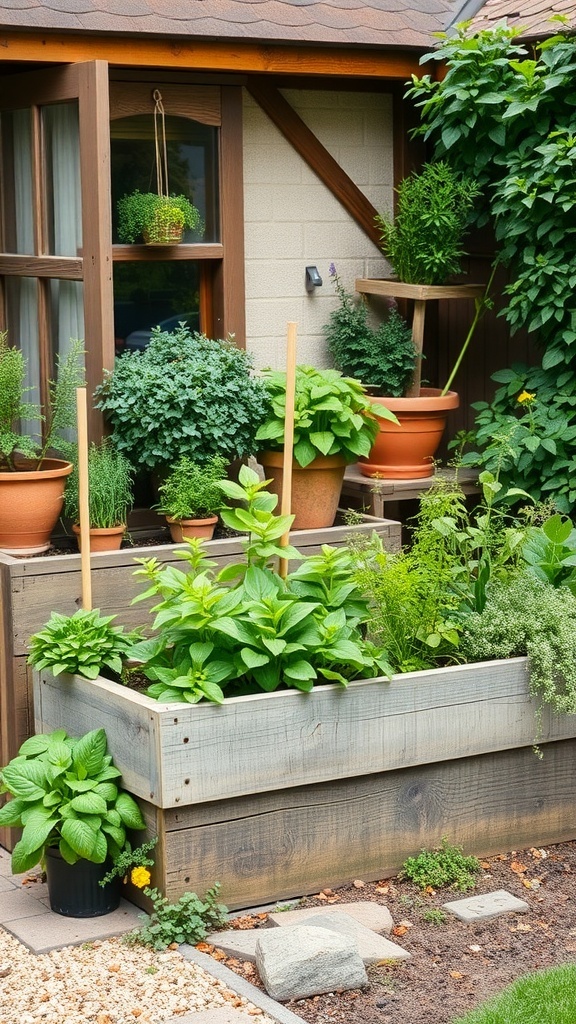
A rustic herb garden can bring charm and practicality to any outdoor space. Imagine stepping into a cozy nook filled with fresh scents and vibrant greens. The image showcases a lovely arrangement of herbs in wooden planters, perfectly blending with the surrounding architecture.
In the foreground, you see lush green plants, likely basil and mint, thriving in a spacious raised bed. These herbs not only add flavor to your meals but also enhance the garden’s aesthetic. The wooden planters give a warm, natural feel, making the garden inviting.
On the shelves above, various pots hold different herbs, showcasing a mix of textures and colors. This vertical gardening approach saves space and adds visual interest. Hanging plants near the window add a touch of whimsy, inviting nature right into your home.
Creating a rustic herb garden is simple. Start with a few favorite herbs, choose wooden or stone containers, and arrange them in a way that feels natural. Whether you have a large yard or a small balcony, this design can fit any space and bring a bit of nature to your everyday life.
Incorporating Water Features for Tranquility
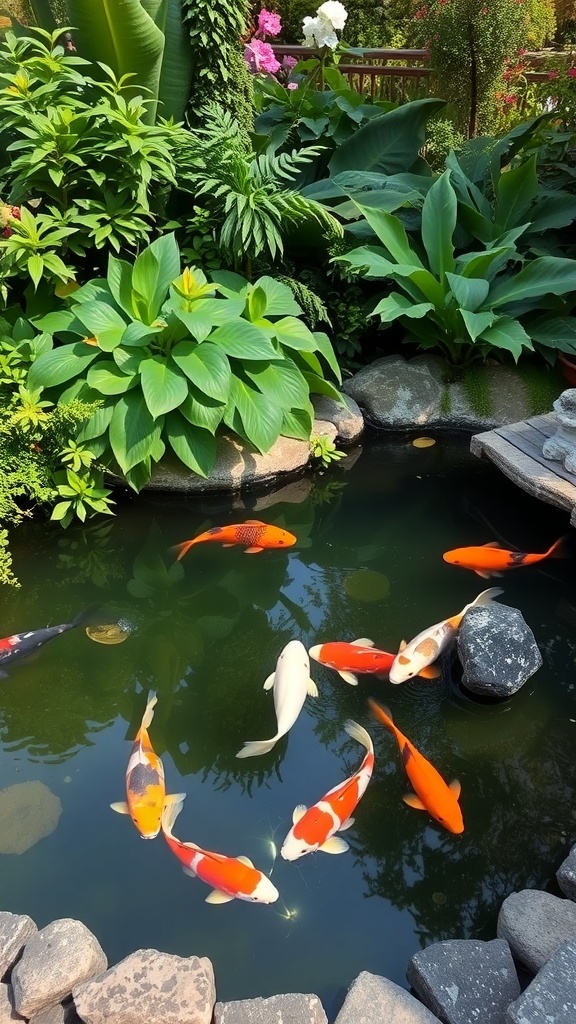
Water features can transform any garden into a peaceful retreat. A pond, like the one shown in the image, adds a soothing element to the landscape. The gentle movement of water creates a calming atmosphere, perfect for relaxation.
In this pond, colorful koi fish swim gracefully among lush greenery. Their vibrant colors bring life to the water, making it a focal point in the garden. Surrounding plants not only enhance the beauty but also provide shade and habitat for wildlife.
Adding stones around the pond creates a natural look and helps integrate the feature into the garden. This setup encourages visitors to pause and enjoy the serene environment. Whether you want to meditate, read, or simply enjoy nature, a water feature can be the perfect addition.
Consider incorporating plants that thrive near water, like ferns and lilies, to enhance the visual appeal. The combination of water, fish, and plants creates a harmonious space that invites tranquility into your outdoor area.
Utilizing Vertical Gardening Techniques
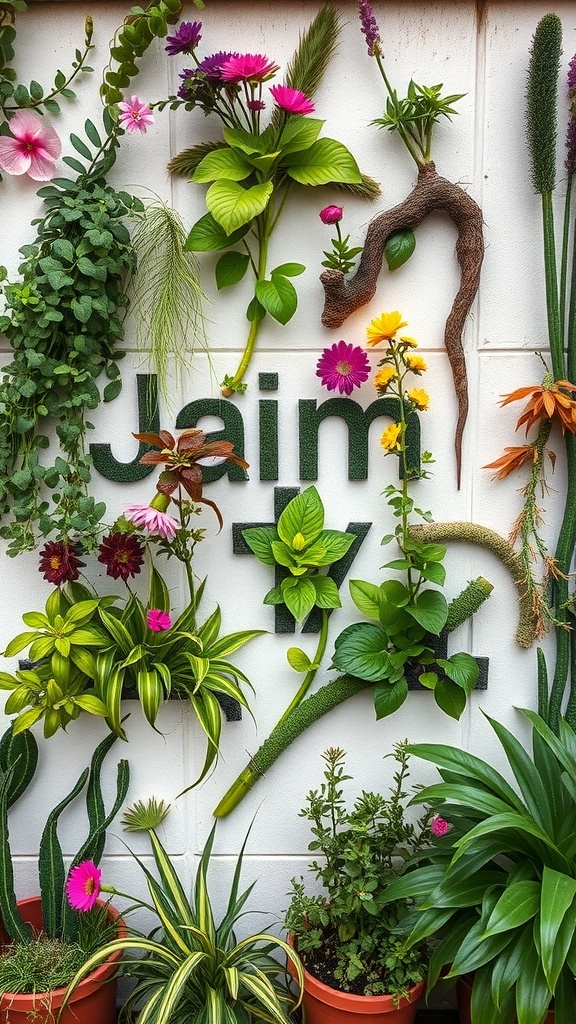
Vertical gardening is a fantastic way to maximize space and add a splash of color to your garden. The image showcases a vibrant vertical garden that beautifully combines various plants, creating an eye-catching display. The arrangement features a mix of flowers and greenery, all thriving on a wall, which is a clever use of limited space.
In this setup, plants like succulents and flowering species are strategically placed to create depth and texture. This technique not only beautifies the area but also promotes healthy plant growth by allowing better air circulation and sunlight exposure.
Using vertical gardening techniques can transform any dull wall into a lively focal point. You can choose from a variety of plants based on your climate and personal preference. From hanging planters to wall-mounted pockets, there are plenty of options to get creative.
Incorporating vertical gardens into your outdoor or indoor spaces can also improve air quality and provide a calming atmosphere. So, whether you have a small balcony or a spacious backyard, consider adding a vertical garden to enhance your environment.
Using Garden Art to Enhance Aesthetics
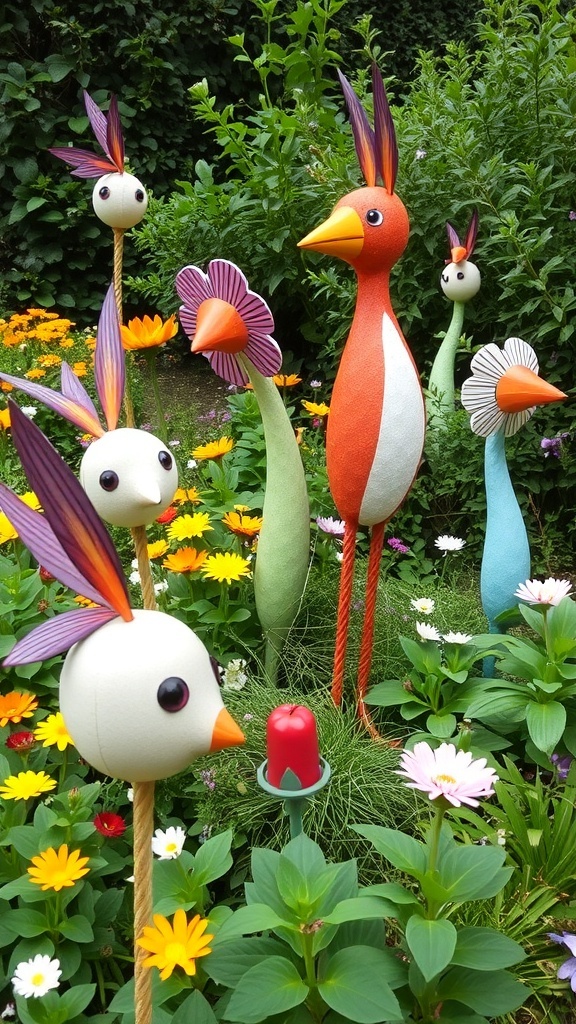
Garden art can truly transform your outdoor space. The image showcases a vibrant garden filled with playful sculptures and colorful flowers. The large letters spelling out ‘R HOLE TARN’ stand tall, adding a fun focal point to the scene.
Incorporating unique pieces like these can bring personality to your garden. The whimsical flamingos and charming bird sculptures blend seamlessly with the lush greenery and blooming flowers. This combination creates a lively atmosphere that invites relaxation and enjoyment.
Using garden art is not just about decoration; it’s about creating a space that reflects your style. Whether you prefer modern pieces or classic designs, there’s something out there for everyone. The key is to choose items that resonate with you and enhance the natural beauty of your garden.
Consider adding a mix of heights and colors, as seen in the image. The tall, colorful plants and quirky sculptures create visual interest and depth. This playful approach can make your garden feel more dynamic and engaging.
Designing a Cozy Outdoor Seating Area
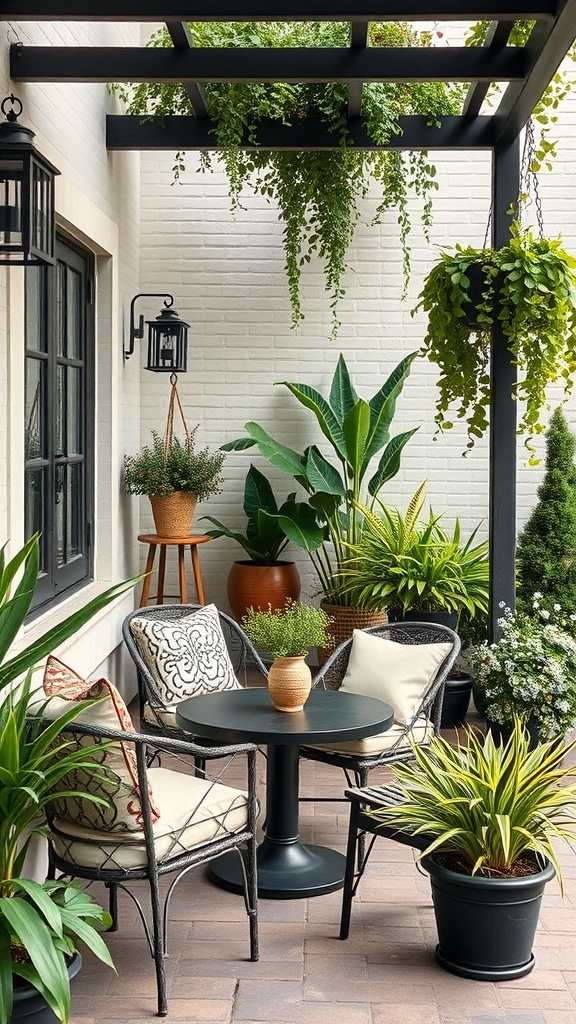
Creating a cozy outdoor seating area can transform your garden into a welcoming retreat. Imagine a space where you can relax with a book or enjoy a cup of coffee with friends. The image shows a charming setup that perfectly captures this idea.
The seating arrangement features comfortable chairs with soft cushions, inviting you to sit back and unwind. A small table sits in the center, ideal for placing drinks or snacks. The black metal frame adds a modern touch, while the intricate patterns on the chairs bring a hint of elegance.
Surrounding the seating are lush plants in various pots, adding life and color to the space. The greenery not only enhances the visual appeal but also creates a refreshing atmosphere. Hanging plants above provide shade and a sense of intimacy, making it a perfect spot for gatherings.
Lighting plays a key role too. The lantern adds a warm glow, making evenings spent here even more special. This cozy nook is perfect for both daytime relaxation and evening conversations under the stars.
Creating a Serene Zen Garden
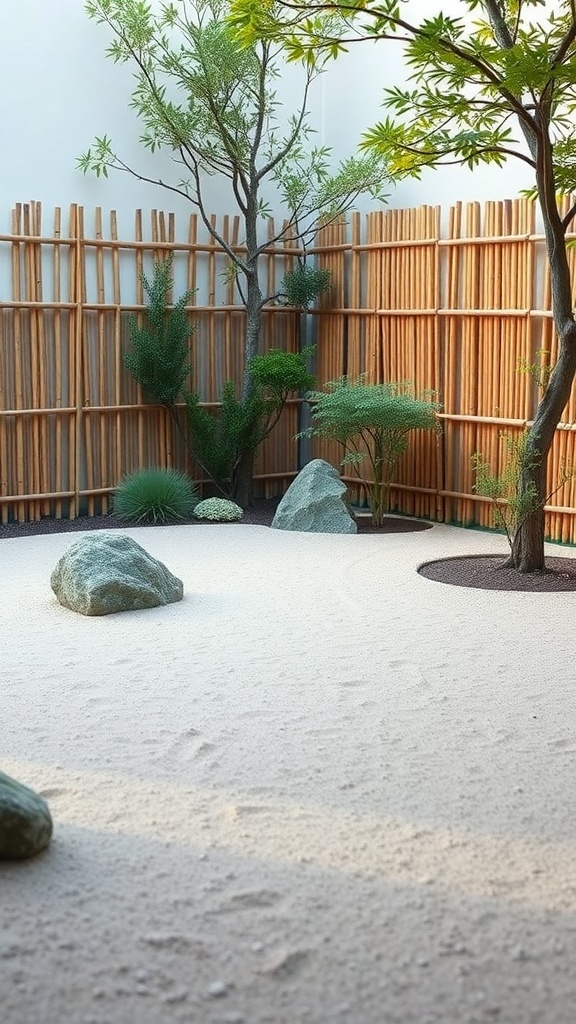
A Zen garden is a peaceful retreat that invites relaxation and reflection. The image showcases a beautifully arranged space, featuring smooth rocks, gentle curves in the sand, and lush greenery. This setup encourages a calming atmosphere, perfect for unwinding after a long day.
The natural elements in the garden, like the bamboo fence and the trees, create a sense of privacy and intimacy. The rocks are strategically placed, symbolizing mountains or islands, enhancing the garden’s tranquility. The raked sand represents water, adding to the serene vibe.
To create your own Zen garden, start with a simple layout. Use fine sand or gravel for the base, and add a few carefully chosen rocks. Incorporate plants that thrive in your climate, ensuring they complement the overall design. This space can be a wonderful spot for meditation or simply enjoying nature’s beauty.
Creating Pathways with Natural Materials

Pathways are essential in any garden design. They guide visitors through the space and create a sense of flow. Using natural materials for pathways adds charm and blends seamlessly with the environment.
The image showcases a stunning stone pathway, lined with lush greenery. The stones are arranged in a way that feels organic, almost like they belong there. The grass peeking through the gaps softens the look, making it inviting.
Choosing materials like stone or gravel can enhance the aesthetic of your garden. These materials are durable and can withstand the elements, ensuring your pathways last for years. Plus, they provide a rustic feel that complements the natural beauty of plants and trees.
Consider the layout of your pathway. Curved paths, like the one in the image, create a more relaxed atmosphere. They encourage exploration and make the garden feel larger. You can also add seating areas along the way, inviting people to pause and enjoy the scenery.
Incorporating natural pathways not only beautifies your garden but also encourages a connection with nature. It invites everyone to take a stroll, breathe in the fresh air, and appreciate the beauty around them.
Incorporating Seasonal Elements for Year-Round Appeal
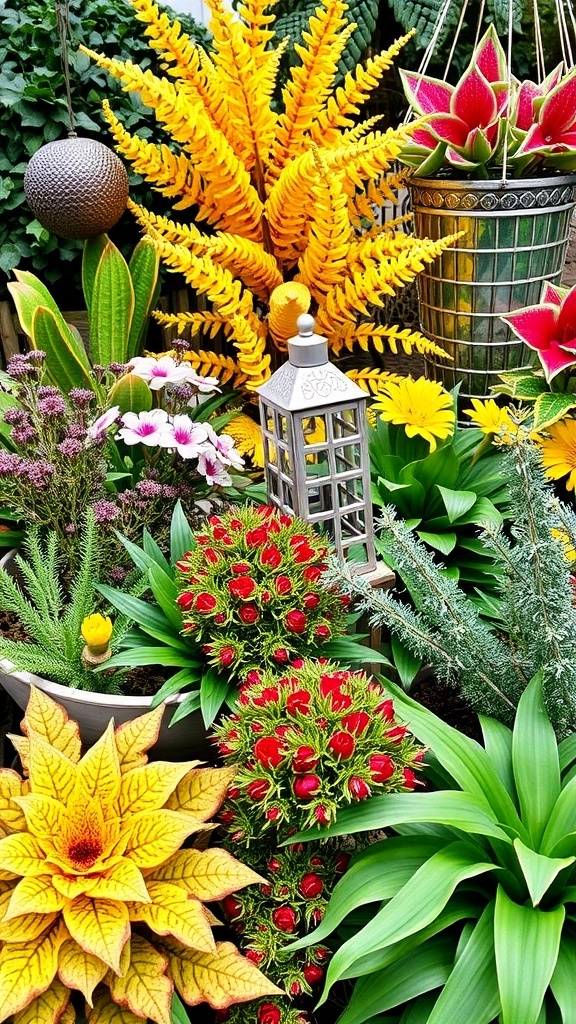
Creating a garden that looks good all year can be fun and rewarding. The image shows a vibrant garden filled with colorful flowers and interesting features. You can see bright yellow flowers, cheerful tulips, and lush greenery all around.
One way to keep your garden appealing through the seasons is by mixing plants that bloom at different times. For example, spring flowers like tulips can be paired with summer blooms like sunflowers. This way, there’s always something in bloom.
Adding decorative elements, like the charming deer statue in the image, can also enhance the garden’s appeal. These features add character and can make your garden feel more inviting.
Don’t forget about foliage! Plants with interesting leaves can provide beauty even when flowers aren’t in bloom. The mix of colors and textures in the garden shown adds depth and interest.
Lastly, consider seasonal decorations. Changing pots and ornaments with the seasons can give your garden a fresh look without needing to change the plants. This keeps your space lively and engaging all year long.
Creating a Wildlife-Friendly Habitat
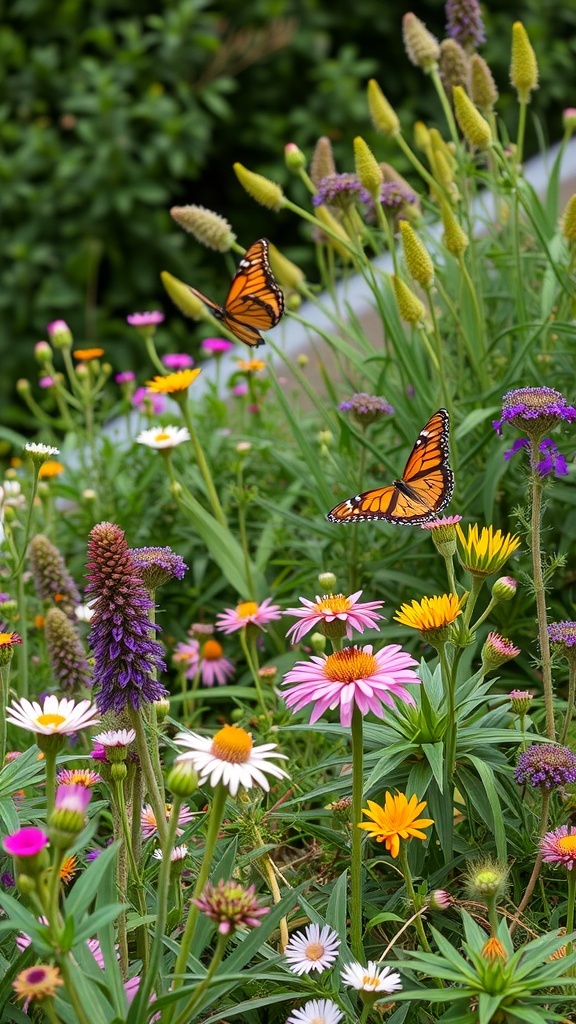
Creating a wildlife-friendly garden is a wonderful way to connect with nature. The image shows a vibrant garden filled with colorful flowers and fluttering butterflies. This lively scene highlights how a well-planned garden can attract various creatures, making it a haven for wildlife.
To start, choose native plants that thrive in your area. These plants provide food and shelter for local wildlife. The flowers in the image, such as daisies and coneflowers, are perfect examples. They not only add beauty but also attract pollinators like bees and butterflies.
Adding water sources, like birdbaths or small ponds, can further enhance your garden’s appeal. Birds and other animals will appreciate the chance to drink and bathe. The butterflies in the image show how inviting a garden can be when it offers the right elements.
Lastly, avoid using pesticides. These chemicals can harm beneficial insects and other wildlife. Instead, embrace natural pest control methods. This approach helps maintain a balanced ecosystem in your garden.
